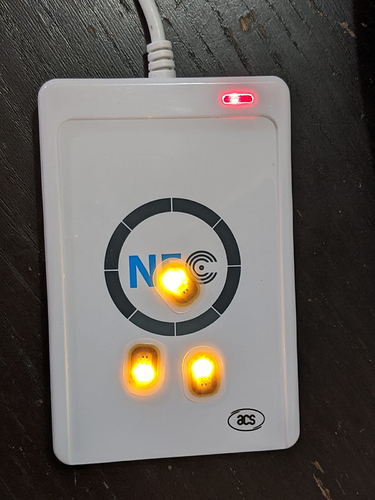also, while working on flexnext inventory, i managed to pop out a few of these little things… just the nfc nail led only (in biopoly).
Because @Pilgrimsmaster asked in another thread, i’ll repost here;
It’s very hard to give a straight answer with range comparisons because the xLED has a fundamentally different antenna, so range will vary drastically depending on the reader you’re interacting with, as well as the normal orientation issues. For example, the ACR122U has a specific spot where xLEDs perform pretty well… but no such spot exists for basically any other readers or phones. The ACR122U has a very unique antenna design with ground planes built to constrain and shape the field… very strange, but effective. Take one apart and check the PCB, you’ll see what I mean.
Here’s my totally unfair and basically pointless comparison on the ACR122U;
xLED; 15mm
nfc nail; 30mm
nfc nail on flexnext; 55mm
These are the “light points” where the LED starts to light up, not max brightness… but it’s typically only a few less mm to achieve max brightness, depending on the LED characteristics involved.
